Geetha Iyer
The United Nations defines climate change as long-term shifts in temperatures and weather patterns. These shifts may be due to natural phenomena as well as due to the life cycles of species; and one particular species, namely Homo sapien’s, way of life has contributed significantly to these shifts.
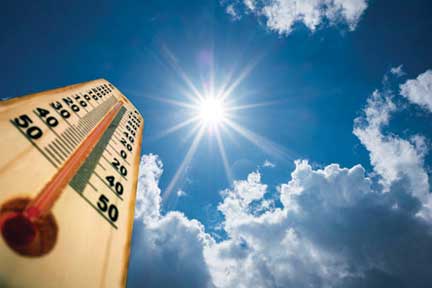
The most important factor that brings about climate change is the Earth’s temperature. Three natural factors influence this temperature. They are – the composition of the Earth’s atmosphere, the intensity of solar radiation, and the albedo effect, i.e., how much of the sunlight is reflected back from the ground surfaces of the Earth. Scientists have been monitoring these factors for decades. Their data show that solar radiation and surface reflectivity have not contributed to climate change in any significant manner. What has?
It’s mainly the composition of the Earth’s atmosphere. CO2, Methane, and water vapour present in the atmosphere can trap solar radiation, thus warming the Earth – a phenomenon we are familiar with as the greenhouse effect. Living beings also contribute to the composition of the Earth’s atmosphere. In fact, this is where the role of species in driving climate change comes in.
The metabolic processes required to sustain life, such as photosynthesis, respiration, etc., release gases and water vapour into the atmosphere. In Nature, gaseous outputs of some species are utilized by other species for their metabolic process, thus maintaining a balance in the natural cycle of gaseous circulation between atmosphere and species. The carbon-oxygen cycle and water cycle that one studies in science or geography are examples of natural cycles.
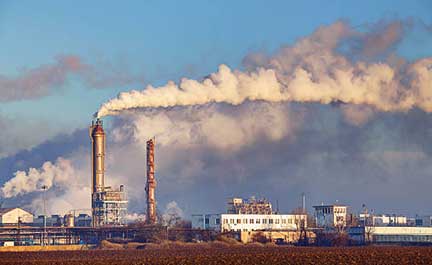
However, human beings, by way of their lifestyles have interfered with these natural cycles leading to an imbalance in the composition of the Earth’s atmosphere. The use of fossil fuels in various walks of life by humans have dramatically increased the CO2 levels in the atmosphere. Plants remove CO2 from the atmosphere, thus green areas, forests, etc., are carbon sinks that can regulate the atmospheric CO2. But there is rapid degradation of forests and other green areas. So it’s a double whammy increased output and decrease removal of CO2 from the Earth’s atmosphere. The data available from the past shows that burning fossil fuels for the last 250 years has contributed to the rise in global temperatures by 1° C. The effect of this is visible for anyone who is willing to observe. Monsoon patterns have changed, floods and droughts are on the rise and in the Western hemisphere, forest fires rage. Are we willing to take responsibility and change the way we live?

Classroom activity
Unfortunately a large population of humans still lives in denial and refuses to believe in climate change. Climate change is not an overnight phenomenon, it’s a gradual process governed by several factors. So, in our classrooms let’s begin by asking some questions. Has climate not changed on this Earth? What were the causes? When it did, what were the resulting effects? The Earth has undergone several cycles of change, from floods to ice age. History of the Earth will help understand climate change. This is a topic not restricted to any one science but can be studied in a geography or language classroom.
Begin by using the programme EarthViewer* developed by the Howard Hughes Medical Institute’s BioInteractive team. It will help understand the nature of change that has happened on Earth since it was born. It will also help understand how climate change is part of a system and how it can alter the diversity and ecology of the Earth.
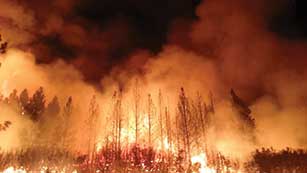
The EarthViewer is an interactive module that allows students to explore the Earth’s history from 4.5 billion years ago when it was formed to the modern times.
Here they can view the changes in Earth’s temperature as well as the changes in other factors that governed the Earth’s history. Climate change is part of a system. The module allows students to correlate factors such as oxygen concentration, species extinction, ice age, etc. It allows the students to analyze factors to understand why climate change is happening and verify if the statement that “lifestyles of humans contribute to it” is indeed true.
The tutorial will help you navigate through the programme. There are worksheets accompanying this module that will not only help you focus on getting data related to this phenomena but also serve as an information sheet.
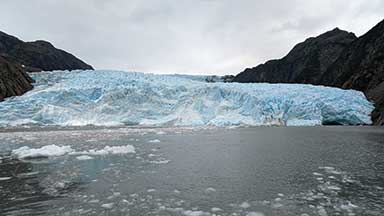
Climate is changing. The science behind climate change is well explained in this video https://www.biointeractive.org/classroom-resources/science-climate-change
Is it possible that actions by human beings can actually slow down the pace of climate change? There is evidence that if we put our mind to it, it can be done. CO2 emissions had come down by 17% during the peak of shutdowns due to the corona virus pandemic. Data available for the pandemic year 2020 from Associated Press, as quoted in HHMI’s BioInteractive reports, “For a week in April, the United States cut its carbon dioxide levels by about one-third. China, the world’s biggest emitter of heat-trapping gases, sliced its carbon pollution by nearly a quarter in February, according to a study in the journal Nature Climate Change. India and Europe cut emissions by 26% and 27% respectively.” However, by April 30 the levels had begun to rise again. What is India’s contribution to the increase in Earth’s temperature?
Go to http://www.globalcarbonatlas.org/en/CO2-emissions and see the extent of fossil fuel emissions by various countries. With an emission of 2442 Mt CO2, India’s emissions are third largest in the world.
CO2 levels are increasing quite rapidly in the atmosphere. Scientists have looked into the past history of the Earth to understand the relationship between rising temperatures and CO2 concentrations. They examined the data by going back as far as 800,000 years and found that a change in temperature was closely linked to a rise or fall in the CO2 concentration. Earth’s history conclusively proved that temperature and CO2 concentrations are intimately linked.
What can be done?
Individual efforts do count, but its not enough. We need a partnership between individuals, organizations, and governments. It has to be a global responsibility. The Earth’s atmosphere is not a fixed entity, it’s a system whose composition is determined by many factors. We need a large scale change in the society, in the way we lead our lives, in the philosophy that should begin to respect Nature.
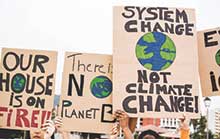
We are raping Nature, by indiscriminately cutting down trees and forests, polluting air and water, drilling deep into the ocean, genetically modifying the food we grow, chemically altering livestock’s secretions …the list is endless. We do not see the rising number of cancers, diabetes, zoonotic diseases as a sign of our disconnect with Nature. Human beings have become an arrogant species, who believe that their superior brain power can find an answer to every problem. Is that true? Why then are we unable to check floods and droughts, forest fires, and glacier melting?
Activity
Web of life activity: Weekend activity/classroom activity
- Choose any one of the examples given in the para above regarding raping Nature for the activity.
2a. Next list down your daily activities, from the time you wake up to the time you go to bed. The activity list will include every small and big activity, from your morning ablutions, brushing your teeth, to eating, travelling to school, or anywhere out (if you choose to list the activity for a Sunday), playing, shopping (if any), entertainment, to getting ready to sleep. Don’t leave out anything.
2b. If this is being done as a classroom activity then start your list from the way you arrive at school to when you leave for home. It will include everything you do in school, including the materials you use/consume while in school. - Now list everything you used or interacted with during your time under the two headings Living and Non-living.
- Write down the kinds of interactions you had while staying in school with both biotic factors (i.e., anything living) and abiotic factors (non-living). List how many of such interactions were a) directly with Nature b) indirectly with Nature.
- Instead of creating food chains that you are familiar with, create relationship chains for the above.
- Now combine both to create a web of relationship. Ask your teacher to show you a web of life existing in Nature. Compare your web of relationship with the web of Nature (which is also nothing but relationships occurring in Nature}.
- What inferences can you make by comparing the two webs? Does it tell you anything about the way you lead your life? How connected or disconnected are you from Nature?
- Do you think it has any bearing on the way the life on Earth and by extension the climate on Earth is changing?
Conclusion
Climate is part of a system, not an individual entity. We are, along with all the species that exist on Earth, a part of this system. Systems are regulated by inputs and outputs to maintain a balanceable range in order to remain fairly stable. Warming of the Earth’s surface, resulting in an increase in temperatures has resulted in an imbalance in the system. The Earth explorer will give you an idea of what happens to species when climate changed in the past. Extinctions of species have occurred at such times. If we do not take responsibility to change our way of life, are we on the throes of the extinction of the human species? We have a choice but do we have the courage and conviction to change?
Resources
- Understanding Global Change: https://www.biointeractive.org/classroom-resources/understanding-global-change
- What is my Carbon Footprint: https://www.biointeractive.org/classroom-resources/what-my-carbon-footprint
- Global Carbon Atlas 2021: http://www.globalcarbonatlas.org/en/content/welcome-carbon-atlas
- Carbon Cycle on Planet Earth: http://www.globalcarbonatlas.org/en/outreach
- Ocean acidification activity: https://www.biointeractive.org/classroom-resources/ocean-acidification
*https://www.biointeractive.org/classroom-resources/earthviewer
The author is a consultant for science and environment education. She can be reached at scopsowl@gmail.com.
